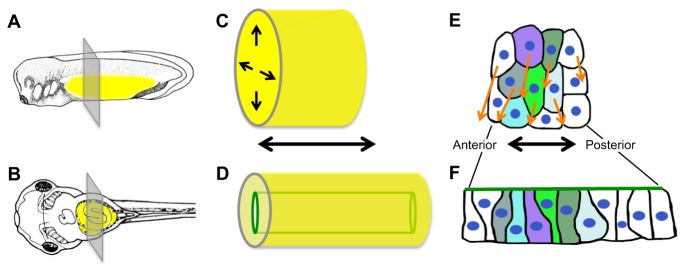Fig. 2.
Radial intercalation elongates the Xenopus primitive gut tube. (A,B) Tadpoles at stage 31 (A) and 41 (B); yellow highlights the gut (adapted from Nieuwkoop and Faber, 1994). (C,D) The primitive gut is initially a solid rod (C). Intercalation movements (arrows in C) narrow and elongate the gut and simultaneously generate a lumen (green tube in D). (E,F) During radial intercalation, endoderm cells slide between anterior and posterior neighbors (arrows), elongating the gut along its anterior-posterior axis. Colored cells, initially unpolarized and multi-layered (E), transition to a single layer with an apical (green) surface (F).

